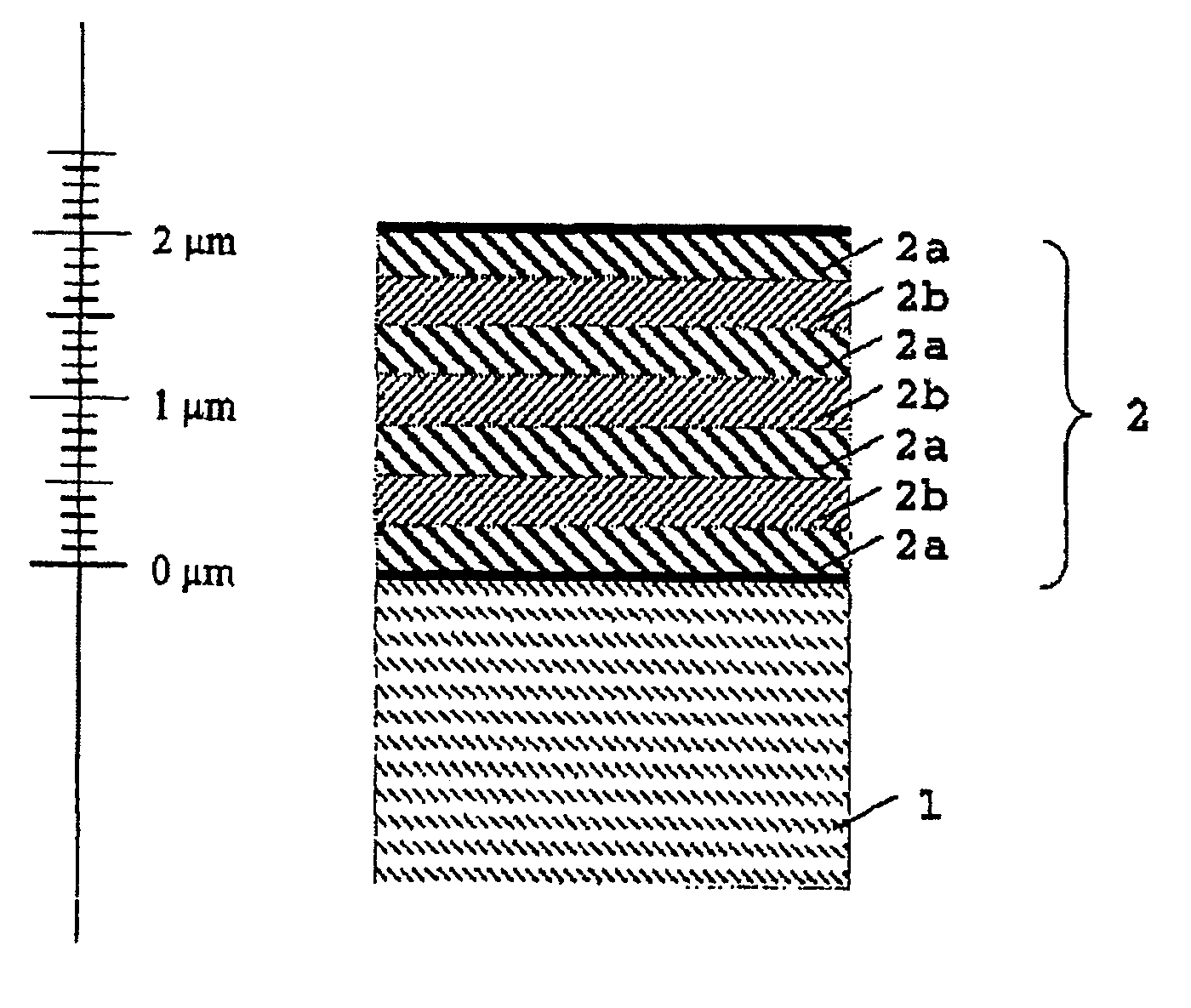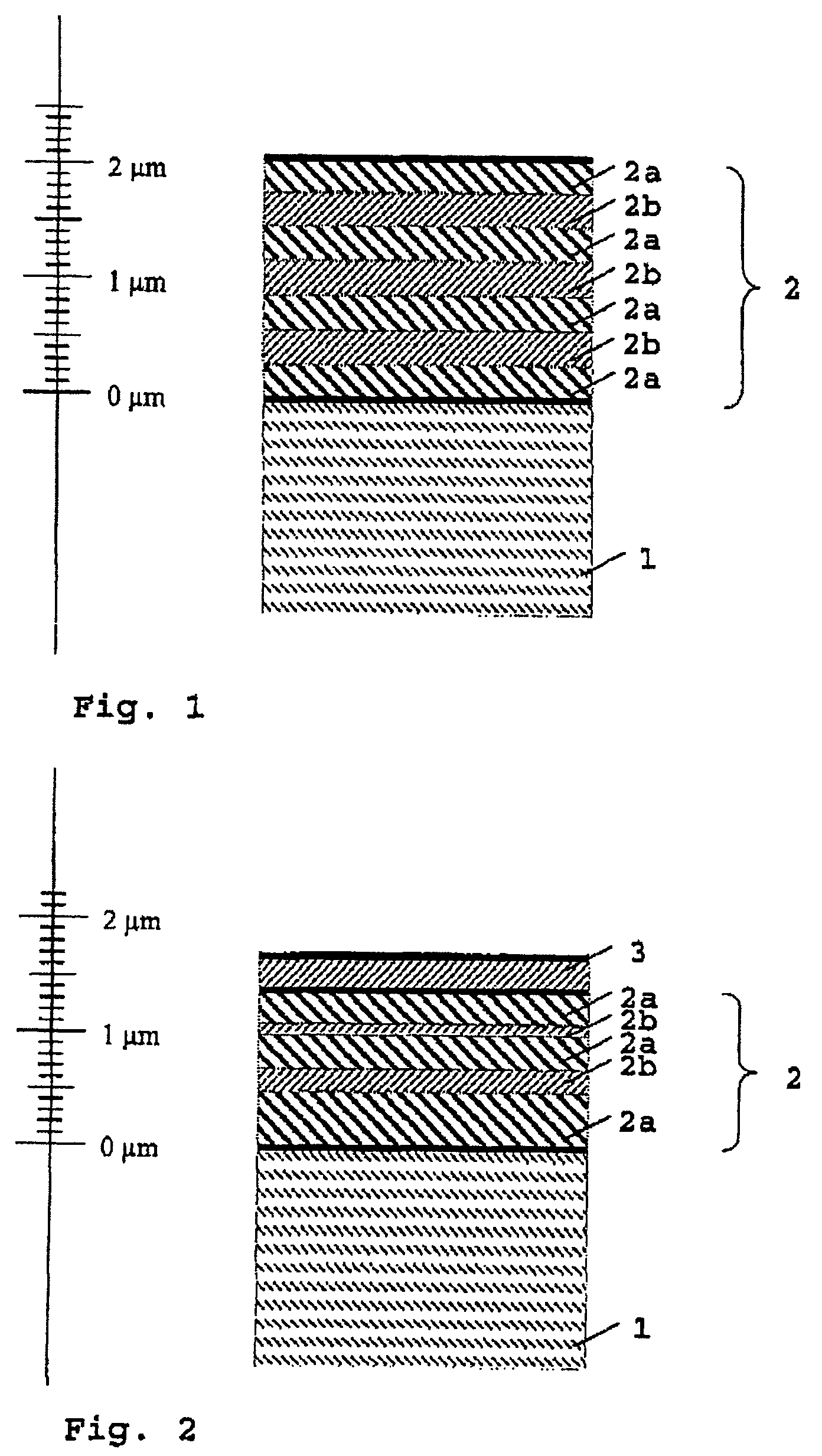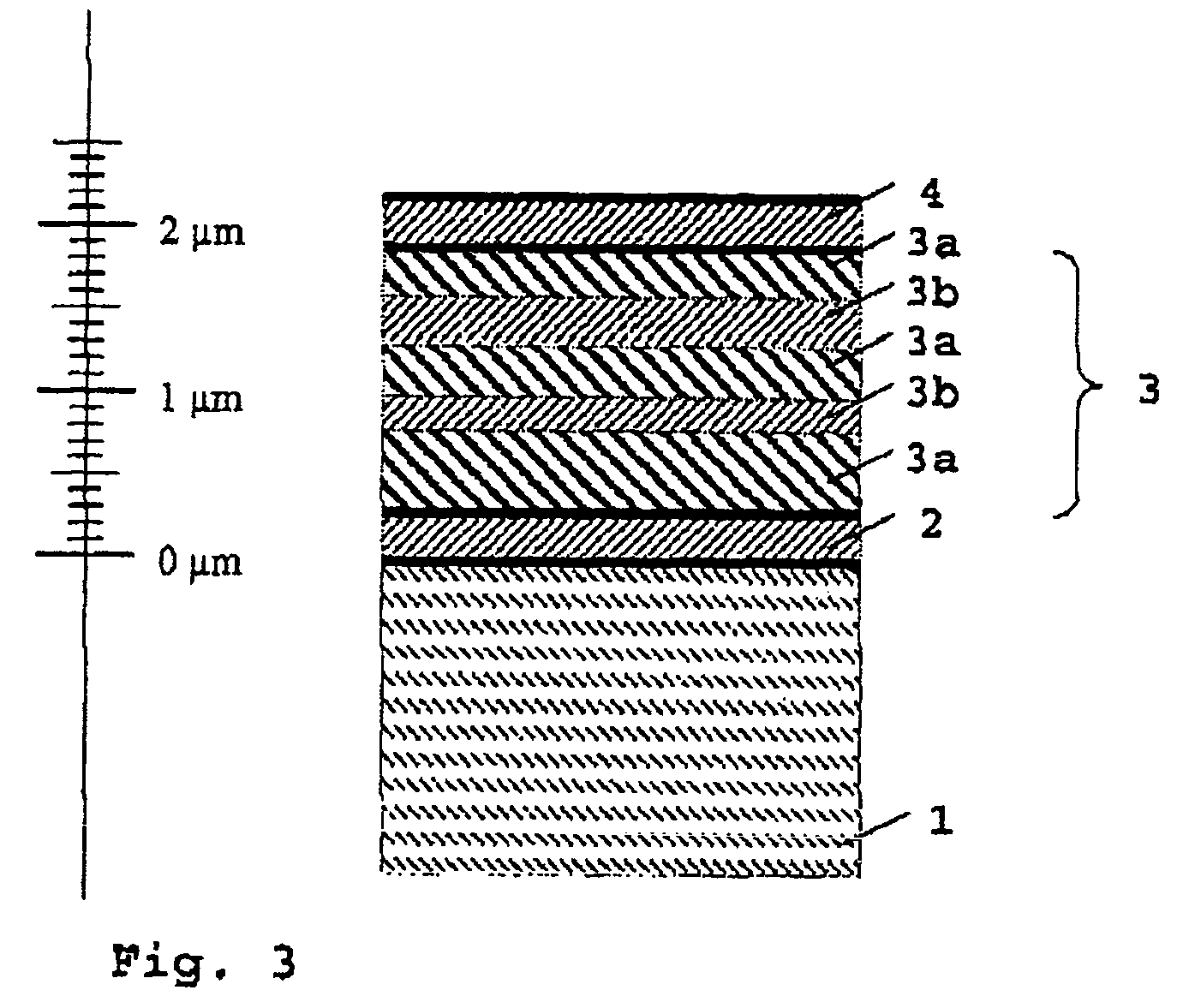Transparent protective layer for a body
a protective layer and transparent technology, applied in the field of transparent protective layer, can solve the problems of high risk of surface damage formation, traces of use produced on the hob, formation of scratches on the surface, etc., and achieve the effects of high thermal stability, attractive visual appearance and transparency, and high resistance to scratching
- Summary
- Abstract
- Description
- Claims
- Application Information
AI Technical Summary
Benefits of technology
Problems solved by technology
Method used
Image
Examples
Embodiment Construction
[0056]FIGS. 1 to 3 diagrammatically depict possible variants of protective layers according to the invention for coating substrates (1). The invention is not restricted to these which cannot all be explained in detail.
[0057]In FIG. 1, a substrate (1) is coated with a hard-material layer (2). The hard-material layer (2) has three interlayers (2b) formed from amorphous titanium / aluminum oxide. The interlayers (2b) are arranged between four sublayers (2a) formed from crystalline, yttrium-stabilized zirconium oxide. The layer thickness of the interlayers (2b) and sublayers (2a) is in each case 300 nm, and the total layer thickness of the hard-material layer (2) is 2100 nm.
[0058]In FIG. 2, a substrate (1) is coated with two hard-material layers (2, 3). The first hard-material layer (2) includes two interlayers (2b) formed from amorphous titanium / aluminum oxide, the interlayer (2b) having different layer thicknesses (200 nm and 100 nm). The interlayers (2b) are arranged between three subl...
PUM
| Property | Measurement | Unit |
|---|---|---|
| thickness | aaaaa | aaaaa |
| thickness | aaaaa | aaaaa |
| Ra | aaaaa | aaaaa |
Abstract
Description
Claims
Application Information
 Login to View More
Login to View More - R&D
- Intellectual Property
- Life Sciences
- Materials
- Tech Scout
- Unparalleled Data Quality
- Higher Quality Content
- 60% Fewer Hallucinations
Browse by: Latest US Patents, China's latest patents, Technical Efficacy Thesaurus, Application Domain, Technology Topic, Popular Technical Reports.
© 2025 PatSnap. All rights reserved.Legal|Privacy policy|Modern Slavery Act Transparency Statement|Sitemap|About US| Contact US: help@patsnap.com



